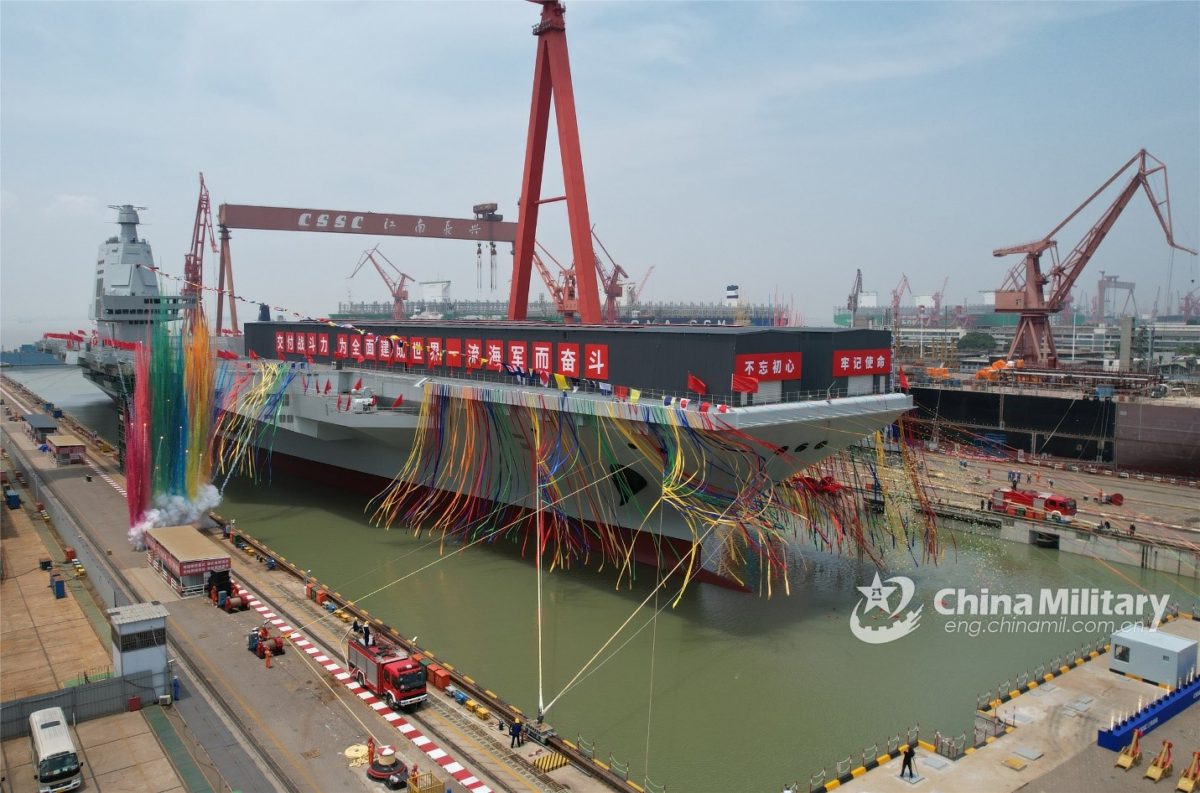In riveting testimony before the Senate Armed Services Committee, Admiral John Aquilino, who leads the U.S. Indo Pacific Command, outlined the danger in a part of the world that America had previously dominated since the end of World War 2.
He noted that “The [Defense] Department has identified the People’s Republic of China (PRC) as the most consequential strategic competitor to the United States and our allies and partners throughout the world. The PRC is in execution of a dedicated campaign utilizing all forms of national power to uproot the rules-based international order in ways that benefit themselves at the expense of all others. Their will and their resources to contest long standing international norms are evident across every regional and functional domain.”
Aquilino pointed out that The PRC seeks to become a global military power and acquire the ability to seize Taiwan, while developing conventional weapons that can reach the U.S. Homeland. The PRC also seeks to establish a network of overseas military installations that would extend its reach, allowing support for an increasingly global People’s Liberation Army (PLA) capable of power projection far beyond the Indo-Pacific. Beijing’s entwined economic and military influences are apparent in the coercive economic actions the PRC has taken against U.S. allies and like-minded partners.
He emphasized that The PLA Navy (PLAN) boasts a battle force of 350 ships and submarines, including more than 130 major surface combatants. Already possessing the largest navy in the world, the PRC is expanding this formidable force by adding new capabilities to a fleet expected to grow to 420 battle force ships by 2025. The U.S. has 297 ships, a number that may shrink due to budget constraints. The PLAN’s priorities are delivering aircraft carrier groups, building expeditionary warfare capabilities with Marine-like forces, expanding their surface force, and increasing undersea capacity.
The PLA’s aviation force is the largest in the Indo-Pacific. More than half of its operational fighter force utilizes 4th generation aircraft or better, and the PRC commenced mass production of its first 5th generation J-20 aircraft. The PLA Air Force is also fielding the nuclear-capable H-6N, the first PLA bomber capable of aerial refueling. Overall, aircraft modernizations and improvements are increasing PLA’s offensive air capabilities.
In addition to an extensive arsenal of advanced ballistic missiles, the PLA Rocket Force is pursuing land-attack, supersonic cruise missiles and other advanced weapons. The PLA’s new generation of mobile missiles uses multiple independently targeted reentry vehicles (MIRVs) and highly capable hypersonic glide vehicles (HGV) designed to evade U.S. missile defenses. The PLA is developing a nuclear triad designed to ensure a survivable, second-strike capability. This capability includes JIN submarines equipped with long-range sea-based nuclear missiles, H-6N bombers with air-delivered nuclear weapons, and a growing land force of mobile and silo-based nuclear missiles.
The PRC is expanding and maturing its space and counter-space programs, including intelligence, surveillance, and reconnaissance (ISR) constellations, particularly its Beidou-3 global satellite navigation system.
Beijing has conducted 55 space launches in 2021, the most launches by any nation. The PLA is also developing a robust counter-space program by delivering directed-energy weapons, jammers, a direct-ascent kinetic kill capability, and on-orbit capabilities with the intent to employ these capabilities to deny U.S. and our allies access to space during a conflict or crisis. PLA development of cyber capabilities are in direct support of intelligence collection against the United States, advanced PLA modernization goals, and intellectual property theft. From denial-of-service attacks to physical disruptions of critical infrastructure, the PRC desires to shape decision-making and disrupt military operations at the initial stages and throughout conflict.
China’s power grows, while the America’s, constrained by budgets that continue to lose ground to inflation, contracts. It is a crisis that requires immediate attention.
Picture: The launching ceremony of China’s 3rd aircraft carrier was held at the Jiangnan Shipyard of China Shipbuilding Industry Corporation on June 17. Featuring flat flight deck, the carrier, named after the Fujian Province, is China’s first domestically-made carrier that uses catapults. With a full-load displacement of more than 80,000 tonnes, the carrier is equipped with electromagnetic catapults and arresting devices. (China Defence Ministry)
